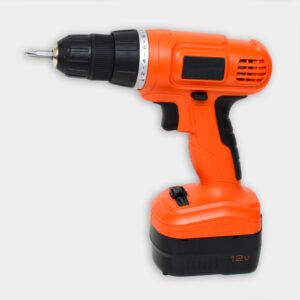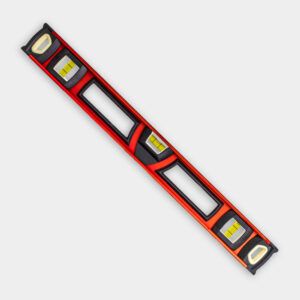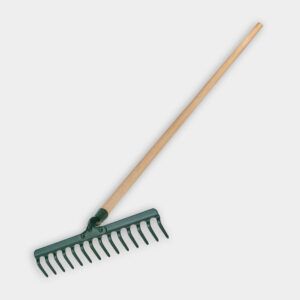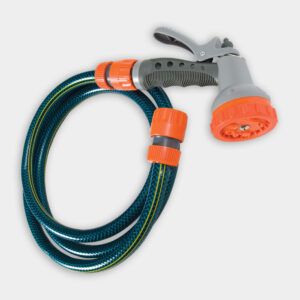We may be compensated if you purchase through links on our website. Our team is committed to delivering honest, objective, and independent reviews on home products and services.
Creating a thriving vegetable garden can be challenging, especially when you’re away from home. A self-watering garden solves this problem. This innovative system combines raised beds with an automatic irrigation setup, allowing you to grow fresh produce with minimal maintenance. In this video, Ask This Old House landscape contractor Jenn Nawada shows how to build a self-watering vegetable garden that’ll keep plants healthy even during summer vacations.
Components of a Self-Watering Garden System
A typical self-watering garden includes the following elements:
- Corner brackets with built-in irrigation connections
- Garden hose
- Irrigation timer
- Raised garden bed
- Soaker hose
Planning Your Self-Watering Garden
Carefully plan your garden’s layout and choose the right location. Consider factors such as sunlight exposure, proximity to a water source, and the types of vegetables you want to grow.
Choosing the Right Location
Select a spot that receives at least 6–8 hours of direct sunlight daily. Make sure the area is level, has good drainage, and is near a water spigot.
Selecting Vegetables for Your Garden
Choose vegetables that thrive in your climate and growing conditions. Some popular options include:
- Herbs (basil, oregano, thyme)
- Lettuce
- Peppers
- Strawberries
- Tomatoes
In the video, Nawada helps the homeowners select a variety of vegetables and herbs suitable for their self-watering garden. She chose strawberries, tomatoes, basil, oregano, thyme, Thai basil, and lettuce.
Materials Needed
Nawada built the raised garden bed using cedar, which is naturally resistant to rot. The Aquacorner Raised Bed Soaker System she used is available through online retailers. She connected a 1-port Orbit irrigation timer to the spigot, which you can find at The Home Depot.
Here’s a full list of materials you’ll need for the project:
- 2-by-8-foot cedar boards
- Corner brackets with built-in irrigation connections
- Drill/driver
- Landscape fabric
- Level
- Screws
- Soaker hose
- Screws
- Landscape staples
- Irrigation timer
- Fruit and vegetable seedlings
- Organic raised garden bed soil
Because the homeowners in the video wanted to grow vegetables, Nawada chose an organic raised bed/potting soil mix.
Building the Raised Garden Bed
A well-constructed raised bed is the foundation of your self-watering garden. Follow these steps to build one.
Assembly Steps
- Cut the cedar boards to the desired dimensions.
- Insert the boards into the corner brackets and secure them with outdoor-rated screws.
- Place the frame in its final location and check that it’s level. Adjust as necessary.
- Line the bottom of the bed with landscape fabric to deter weed growth.
- Fill the bed with organic raised garden bed soil
- Rake the soil smooth.
Installing the Irrigation System
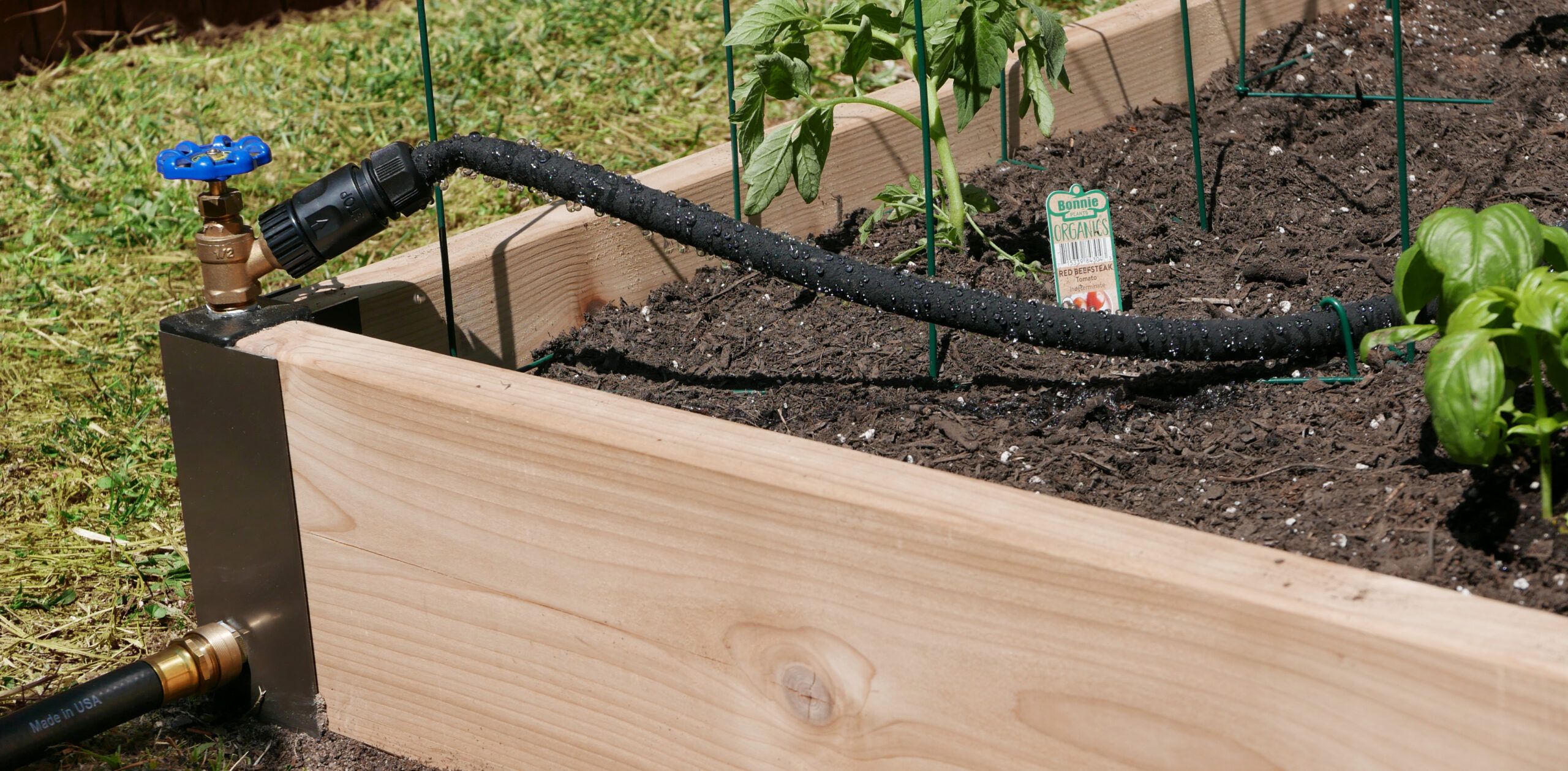
The irrigation system is the key to making your garden self-watering. It helps your plants receive consistent moisture, even when you’re away.
Watering a raised-bed garden can be a daily chore in hot summer weather. A single-zone electronic watering timer gives you a break from that routine. Installation is simple: Just thread it onto an outdoor faucet. On rainy days, push a button to stop irrigation.
Components of the Irrigation System
Home irrigation systems need only a few key components:
- Corner bracket with built-in irrigation connections
- Garden hose
- Irrigation timer
- Soaker hose
Installation Process
In the video, Nawada follows this simple installation process:
- Connect the soaker hose to the spigot on the corner bracket.
- Weave the soaker hose between the rows of plants, using landscape staples to secure it in place.
- Cap off the other end of the soaker hose to prevent water from spraying out.
- Connect the irrigation timer to the house spigot.
- Attach a garden hose from the timer to the lower connection on the corner bracket.
Planting Your Vegetables in the Self-Watering System
With the raised bed and irrigation system in place, it’s time to plant your vegetables. Use these tips to help your garden get off to a strong start:
- Arrange taller plants like tomatoes at the back of the bed and shorter plants in front for easy access.
- Gently tease the roots of seedlings before planting to encourage growth.
- Plant at the same depth as the seedlings were in their original containers.
- Space plants according to their mature size requirements.
Watering After Planting
After planting, give your new garden a thorough soaking to help the plants establish. Use the irrigation system for deep watering, making sure the soil is evenly damp throughout the bed.
Setting Up the Watering Schedule
Proper watering is the backbone of your self-watering garden. The irrigation timer automates this process.
Programming the Timer
Nawada recommends setting the timer for two watering sessions per day, one in the morning and one in the evening. She suggests beginning with 10–15 minutes per watering session and adjusting as needed based on your climate and plant requirements.
Monitoring and Adjusting
Regularly check soil moisture and plant health to see if your watering schedule needs adjusting. Factors such as temperature, rainfall, and plant growth stage may require you to change the watering duration or frequency.
Maintaining Your Self-Watering Garden
While a self-watering garden requires less maintenance than traditional gardens, you’ll still need to do some upkeep for optimal plant growth and health.
Complete these maintenance tasks regularly:
- Check the irrigation system weekly for leaks or clogs
- Fertilize plants according to their specific needs
- Harvest vegetables regularly to encourage continued production
- Monitor for pests and diseases
- Prune and stake plants as needed
